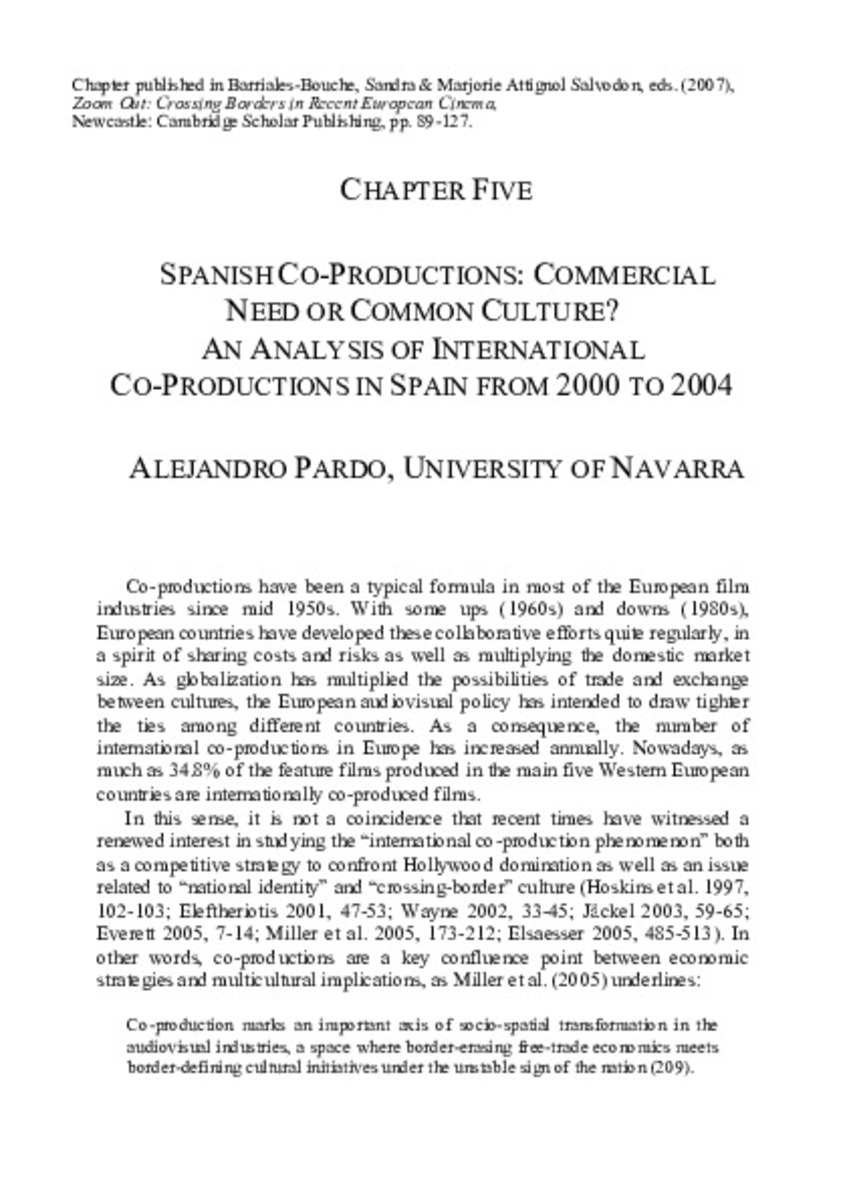"Spanish Co-Productions: Commercial Need or Common Culture? An Analysis of International Co-Productions in Spain from 2000 to 2004"
Palabras clave :
Co-Productions, Film Industry, Spain, Europe, Latin America
Fecha de publicación :
2007
Editorial :
Cambridge Scholar Publishing (Newcastle)
Cita:
Barriales-Bouche, Sandra y Marjorie Attignol Salvodon (eds.), Zoom In, Zoom Out: Crossing Borders in Recent European Cinema, Cambridge Scholar Publishing, Newcastle, 2007, pp. 89-127.
Aparece en las colecciones:
Estadísticas e impacto
0 citas en

0 citas en

Los ítems de Dadun están protegidos por copyright, con todos los derechos reservados, a menos que se indique lo contrario.







